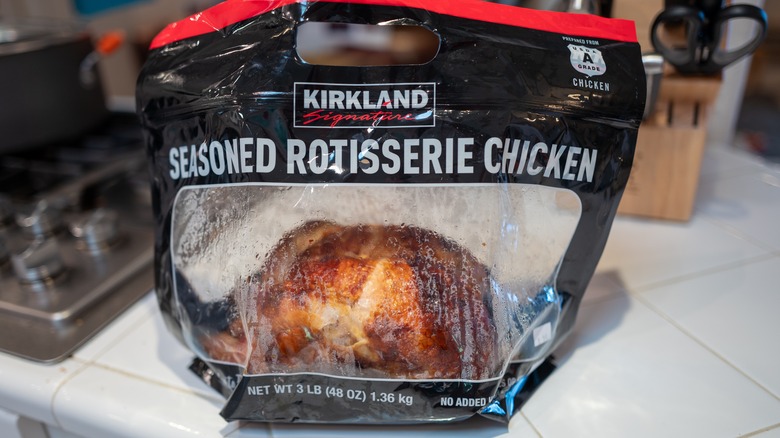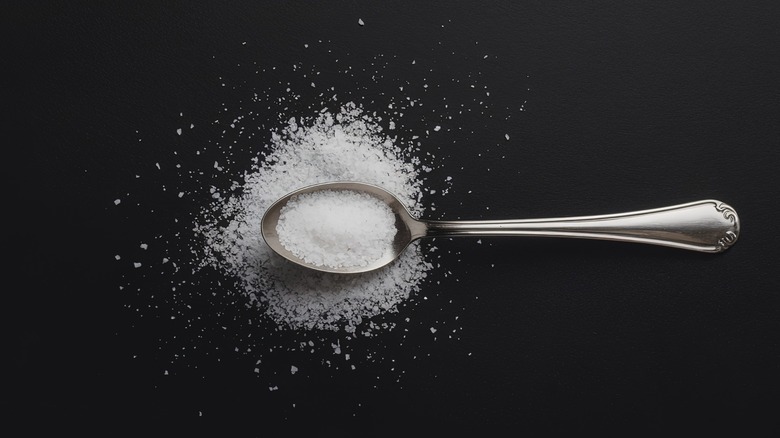The Costco Rotisserie Chicken Red Flag Customers Need To Keep In Mind
Costco offers a ton of exceptional bargains, but its rotisserie chickens are a particular screaming deal. At only $4.99, the cost of a Costco rotisserie chicken has not changed with inflation. It also makes a quick, delicious weeknight dinner, which can sometimes be a necessity if you've ventured on a big shopping trip after work. You already know the best uses for store-bought rotisserie chicken — sandwiches, casseroles, pastas, and, of course, a soup made with the carcass — but maybe you should hold your horses before feasting too regularly on a Costco hen. That's because those chickens contain a lot of sodium.
Currently, there are 460 milligrams of sodium in a three-ounce serving of Costco's rotisserie chicken, which is a whopping 20% of the max sodium (2,300 milligrams) that a healthy adult should consume in a day. Individuals with certain health conditions like high blood pressure, kidney disease, or heart conditions may need to consume even less. Costco's chickens have an unusually high amount of salt among competing grocers' rotisserie chickens: Whole Foods' have between 70 and 120 milligrams per three-ounce serving, Publix birds have 213 milligrams, Wegmans' chickens have 95, and Kroger's have 40. Only fellow warehouse giant Sam's Club has saltier chicken, with an overwhelming 550 milligrams of sodium per serving. Costco rotisserie chickens only have a two-hour shelf life to ensure they taste fresh, and they are extra salty because of the saline brine injected in them to make them taste delicious.
What are the risks of too much sodium in your diet?
According to the American Heart Association, the vast majority of Americans (90%) are taking in too much sodium, and most of it comes from consuming processed or convenience foods. In the short term, eating a diet too high in salt can make you uncomfortable, causing bloating, puffiness, weight gain (from retained fluids), headaches, frequent urination, and even tummy troubles. You may also see a temporary spike in your blood pressure, which can be alarming, to say the least. But the real risk of too much sodium happens over the long term.
Generally, if you have a really salty meal, your kidneys do a good job filtering the excess out and bringing you back to baseline. Over time, repeated helpings of too much sodium can make your kidneys overwork themselves, leading to an increased risk of kidney stones and other diseases of this organ. High blood pressure can also become chronic, which raises your risk factor for heart attack and stroke.
The FDA has implemented a multi-pronged strategy to help Americans lower their dietary sodium, but, ultimately, it's up to every individual to monitor how much sodium is in what they eat. Nobody's saying that you can never enjoy Costco rotisserie chicken again — what a sad life that would be! — but maybe enjoy it in moderation, watch the salt levels in whatever side dishes you eat alongside it, and be extra vigilant about your sodium consumption for the rest of the day.

